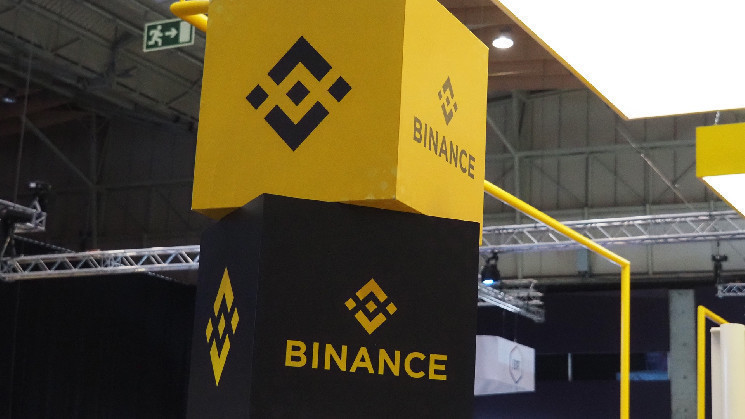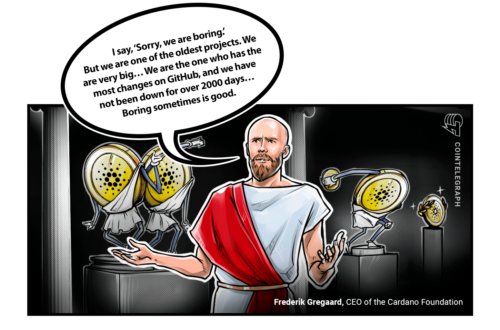
This post is part of Consensus Magazine’s Trading Week, sponsored by CME.
The Chicago Mercantile Exchange is now the place to trade bitcoin futures, apparently. For the first time in months, if not years, CME is now seeing more BTC futures volumes than on the world’s largest cryptocurrency exchange, Binance. This flippening, which has happened before, but doesn’t happen often, is often seen as a sign of increasing institutional interest in crypto.
CME, which incidentally but (please believe me) unrelatedly is the sponsor this week for The Node newsletter, is often seen as The Exchange for Grownups. Whereas, with Binance and co., I think very few people are putting on ties to go to work to trade bitcoin perps on a native crypto exchange.
See also: Ethereum Futures Are Now Trading on CME
Don’t just take my word for it, CoinDesk’s markets guru Omkar Godbole said CME is “considered a proxy for institutional activity” in crypto, on CoinDesk TV’s “First Mover.” “What we are seeing right now is a good old pump of open interest on the CME futures,” he said.
Perhaps this interest is being driven by bitcoin’s price, which has rallied over 100% year-to-date, and institutions want a little bit of the action. Or, it’s because they are taking bets that the narratives around a potential spot bitcoin exchange-traded fund (ETF) being listed by year’s end or the Bitcoin halving on the docket for next year will spur even more buying.
Futures are a type of derivatives contract that gives buyers the option to purchase bitcoin at a predetermined price at a later date. They’re essentially a bet that some asset’s price will go up, so you can buy an option to buy it for less today and pocket the difference.
And lot’s of people seem to think bitcoin has legs to run, yet. Bitwise Chief Investment Officer Matt Hougan essentially said that all the bitcoin ETF hype is not fully “priced in” yet. To be sure, the chief investment officer of a crypto investment company has many incentives to believe something like that and drum up support for that thesis.
It’s also a kettle-of-worms getting into the question of whether the Bitcoin halving is priced in, especially at this point, when it is still six months away. There’s certainly something reasonable about the idea that the fewer new bitcoins released into circulation (as part of the “mining subsidy, which is halved programmatically every four years — hence “the halvening”) will be good for bitcoin’s price. It’s the same theory of supply and demand behind the idea that bitcoins, capped at 21 million coins, are scarce and therefore valuable.
But, if you believe in efficient markets, then you’d have to think a pre-scheduled event that 99.9% of all bitcoin holders know about and eagerly await would have to be “priced in.” Then again, it’s hard to say crypto markets are efficient. And the same guys who thought up the Efficient Markets theory also said it’s impossible to find a $10 bill on the street, because, if it was there, it’d already be pocketed by someone. Yet I find (and lose) money all the time, and crypto traders sometimes make money off of market inefficiencies.
Anyway, to make things even more complicated, Godbole said that typically when bitcoin futures volumes are growing on CME, it’s an indicator that bitcoin’s price is about to drop. This isn’t a hard-and-fast rule, but has been an observable trend following the few times when CME flippened Binance. “Both times, CME’s move to the top spot marked price top,” he said.
What’s more, while CME’s volumes have grown the flippening this time around may have multiple factors. First, Binance’s market share of futures contracts compared to the CME has been on a long-term decline, perhaps due to the exchange’s legal troubles in the U.S. and E.U.
See also: Citigroup to Trade Bitcoin Futures on the CME?
And lastly, there’s also a difference between the types of derivatives traded on CME, where a few traders took out bullish bets, and on Binance, which actually had a high amount of open shorts (bearish bets on BTC’s price) that were liquidated during the recent price rally, Godbole said.
“So, while we’re seeing a spike in CME contracts, that doesn’t necessarily mean that the futures market is suddenly exploding,” he said.
What does this all mean for bitcoin? Are the institutions here? Will the price continue to climb? Dear reader, if I knew I wouldn’t be writing about it — I’d be gambling.
This article was excerpted from The Node newsletter, subscribe here.





